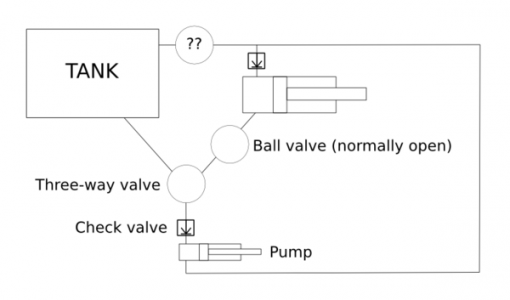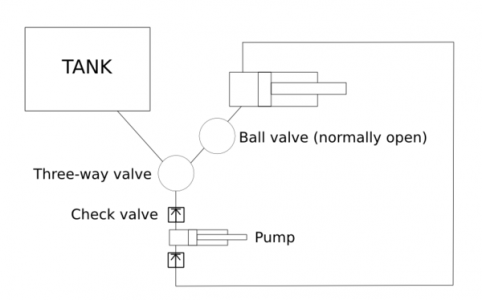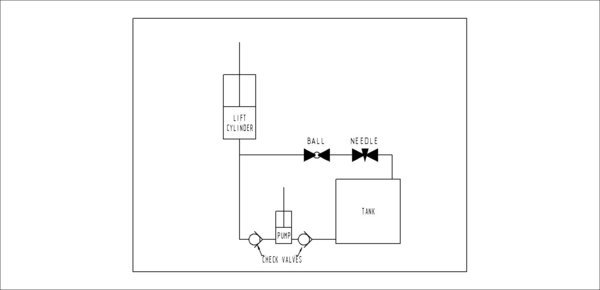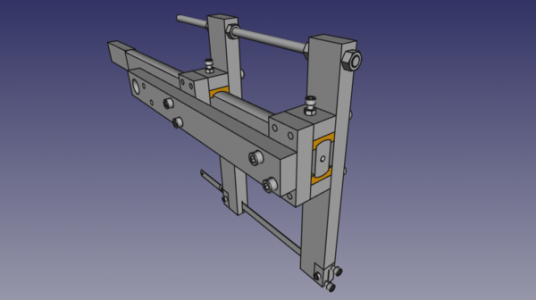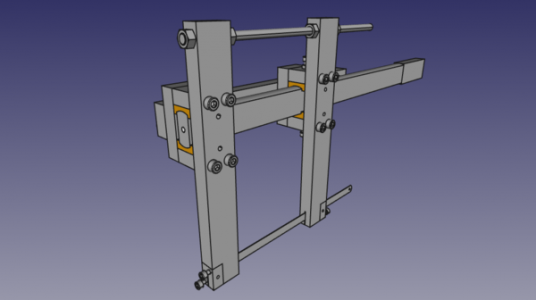Hi guys,
I've been looking at homemade power hacksaws this weekend, as I've been thinking on building one.
In one hand, I'd like to know if there is any literature, manuals or pointers on mechanisms/methods used on these machines. I'm mostly interested in:
* Adjustable blade lifting for the part of the cycle where it's not cutting, so the blade lasts longer.
* Mechanical/pneumatic/hydraulic methods for power feed. Most of the videos I watched on yt show home-built machines that take much longer to cut a piece of rod than one would do manually, plus that I'm not a real fan of simply dropping some weights at the end of the arm just for the sake of it, so looking for some adjustable power-feed systems.
* Methods for stroke-length adjustment. I know the basics, but if there's more info about it, much better.
In the other hand, I'm pulling my hairs out with this two videos:
The first one shows the construction of the power hacksaw, while the second shows it working.
This simple but clever design does everything I want to, lifts the blade for the part of cycle it's not cutting, offers adjustable power-feed so that no weights are needed, and it even lifts the arm once it's done. But I don't fully understand the hydraulic circuit.
I can see the tank made out of hollow square tubing, a cylinder (probably out of a hydraulic jack) acting as a pump, a closed loop cylinder-to-cylinder jig showing the Pascal principle to mechanically act up on a ball-valve (that never fully opens), an adjustable 3-way flow valve, and the one-way hydraulic cylinder which does all the job (blade lifting/power-feed while cutting, and arm-lifting once it's done).
Now, I've been trying to follow the tubing, draw it on paper, adding check-valves here and there, but I miserably fail to reproduce it.
I'd say the ball-valve sits between the cylinder and the 3-way valve, whose other inlet is the tank itself, and whose output is the pump's inlet.
While cutting, one only needs adjust the 3-way valve for the pump to suck fluid with more o less strength out of the cylinder, hence allowing for adjustable power feed.
This makes sense because when the pascal-rig closes the ball-valve at the end of the cutting process, all the flow for the 3-way valve would come from the tank, but I'm missing how the pump output gets redirected to the cylinder (so it raises), and also how it is that while cutting each pump stroke causes the arm to lift a bit.
So if anybody reading this is used to hydraulics and can explain, I'd really appreciate, or if there's some literature about power hacksaws and it's mechanisms.
Thanks!
I've been looking at homemade power hacksaws this weekend, as I've been thinking on building one.
In one hand, I'd like to know if there is any literature, manuals or pointers on mechanisms/methods used on these machines. I'm mostly interested in:
* Adjustable blade lifting for the part of the cycle where it's not cutting, so the blade lasts longer.
* Mechanical/pneumatic/hydraulic methods for power feed. Most of the videos I watched on yt show home-built machines that take much longer to cut a piece of rod than one would do manually, plus that I'm not a real fan of simply dropping some weights at the end of the arm just for the sake of it, so looking for some adjustable power-feed systems.
* Methods for stroke-length adjustment. I know the basics, but if there's more info about it, much better.
In the other hand, I'm pulling my hairs out with this two videos:
The first one shows the construction of the power hacksaw, while the second shows it working.
This simple but clever design does everything I want to, lifts the blade for the part of cycle it's not cutting, offers adjustable power-feed so that no weights are needed, and it even lifts the arm once it's done. But I don't fully understand the hydraulic circuit.
I can see the tank made out of hollow square tubing, a cylinder (probably out of a hydraulic jack) acting as a pump, a closed loop cylinder-to-cylinder jig showing the Pascal principle to mechanically act up on a ball-valve (that never fully opens), an adjustable 3-way flow valve, and the one-way hydraulic cylinder which does all the job (blade lifting/power-feed while cutting, and arm-lifting once it's done).
Now, I've been trying to follow the tubing, draw it on paper, adding check-valves here and there, but I miserably fail to reproduce it.
I'd say the ball-valve sits between the cylinder and the 3-way valve, whose other inlet is the tank itself, and whose output is the pump's inlet.
While cutting, one only needs adjust the 3-way valve for the pump to suck fluid with more o less strength out of the cylinder, hence allowing for adjustable power feed.
This makes sense because when the pascal-rig closes the ball-valve at the end of the cutting process, all the flow for the 3-way valve would come from the tank, but I'm missing how the pump output gets redirected to the cylinder (so it raises), and also how it is that while cutting each pump stroke causes the arm to lift a bit.
So if anybody reading this is used to hydraulics and can explain, I'd really appreciate, or if there's some literature about power hacksaws and it's mechanisms.
Thanks!


